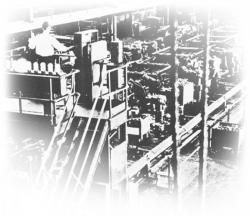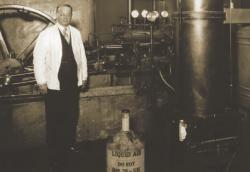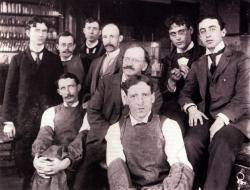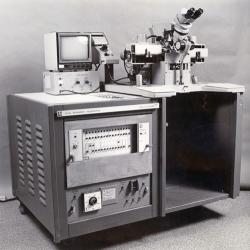In 1899, during the earliest days of the automobile revolution, A. O. Smith developed a new, lightweight steel car frame. Within a few short years, he was selling these frames to a “who’s who” of car makers including Cadillac, Oldsmobile, and Ford. A. O. Smith’s son, Lloyd Raymond, carried on the family company, expanding the automotive business and introducing the world’s first automated frame production line, the Mechanical Marvel.
USA


On January 4, 1891, Herbert H. Dow succeeded in producing bromine electrolytically from central Michigan’s rich brine resources. In the years that followed, this and other processes developed by Dow and the company he founded led to an increasing stream of chemicals from brines. The commercial success of these endeavors helped to promote the growth of the American chemical industry.
The plaque commemorating the event reads:
In his search for a more economical way to make aluminum, Canadian inventor Thomas Leopold Willson accidentally discovered the first commercially viable process for making calcium carbide, which is used for production of acetylene gas, at a location in North Carolina. This chance discovery produced a series of products, from improved lighting in remote locations to the synthesis of a host of organic substances.
The plaque commemorating the event reads:

Working in Bailey Hall on December 7, 1905, Hamilton P. Cady and David F. McFarland discovered significant amounts of helium in a natural gas sample from Dexter, Kansas. Cady and McFarland subsequently analyzed more than 40 other gas samples, showing that helium, previously thought to be rare on Earth but abundant in the Sun, was available in plentiful quantities from the Great Plains of the United States. Helium-filled blimps were vital to the United States in World War II, and helium is still considered a national strategic reserve material.

In his laboratory at Western Reserve University (Now Case Western Reserve University), Edward W. Morley carried out his research on the atomic weight of oxygen that provided a new standard to the science of chemistry. The accuracy of his analyses has never been superseded by chemical means. His great work, published in 1895, also gave important insight into the atomic theory of matter.
He observed, after carefully analysis of the volume proportions in which hydrogen and oxygen unite, that the atomic weight of oxygen was 15.879.
The plaque commemorating the event reads:

This, the first Curtis vertical turbine built, was constructed by the General Electric Co. for the Newport & Fall River Street Railway Co. It operated in the Newport, R.I., generating station until June 1927. It was transferred to the Harding Street Station of the Indianapolis Power & Light Co. for display and later moved to the company's E.W. Stout Station.

The ABACUS II, designed and built by Texas Instruments, was the first practical automated production machine for the assembly of integrated circuits. Using heat and pressure, it bonded fine gold wire to microscopic contacts on the silicon chip and pin connections on the package.
The ABACUS II could maintain a positioning accuracy of ± 0.00025 inch while bonding up to 375 devices an hour. Following the success of this prototype, almost 1,000 ABACUS II wire bonders were built, making the economical mass production of integrated circuits a reality.


